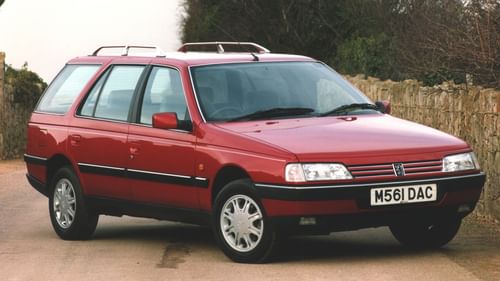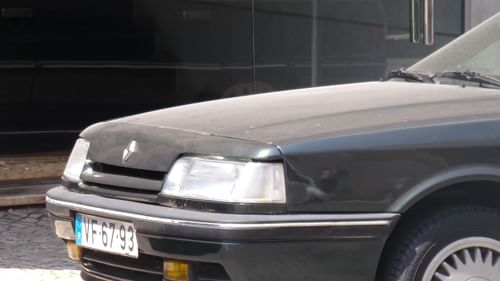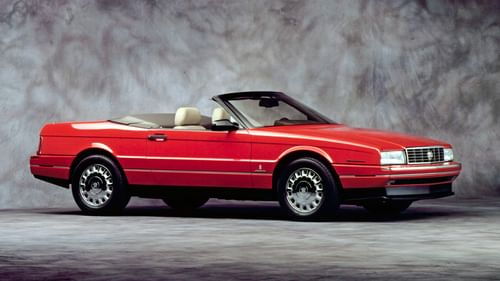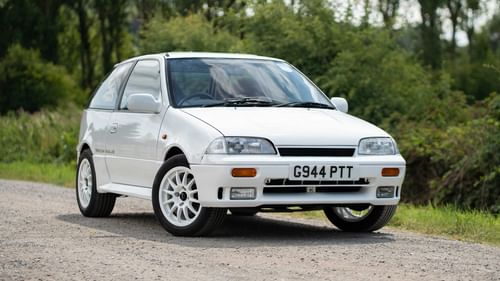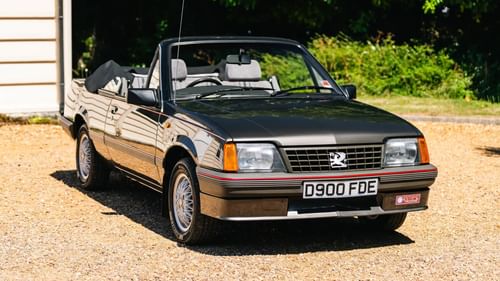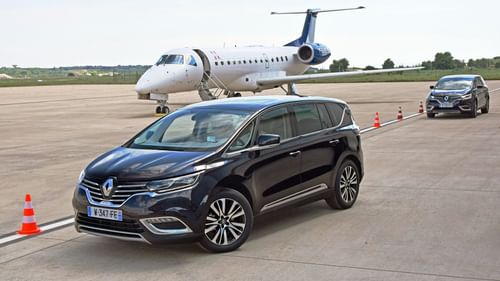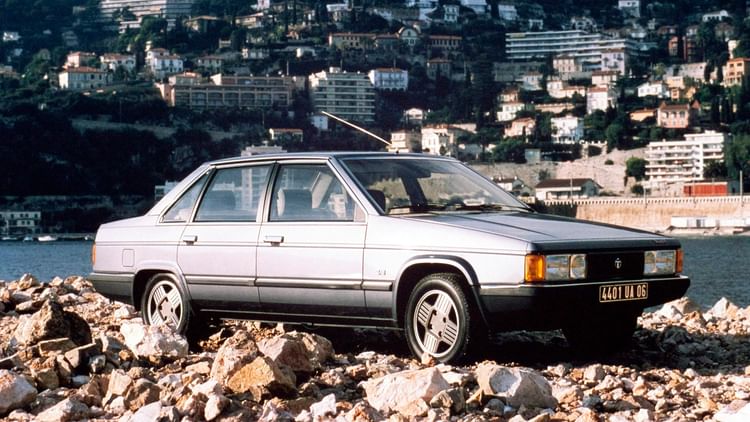
Not all heroes wear capes. When judged on the metrics used to measure automotive success, the Talbot Tagora is a failure. Sales were poor. Press reviews were, at best, lukewarm. Technological advances hard to come by. Motor sport success almost non-existent (although a Tagora in rally cross would have been an enjoyable spectacle).
And yet today, four decades after it was put out of its misery by a disappointed parent who didn’t want it in the first place – and probably wished it had been killed at birth – the Tagora is held aloft in some circles as a motoring legend. Indeed, thanks to a survival rate that should prompt the WWF into launching a ‘Save the Talbot’ campaign, the Tagora has become an automotive unicorn. David Bellamy, who knew a thing or two about endangered species, would have awarded you maximum I-Spy points for spotting one in the wild. According to the DVLA, there are eight cars in the UK, although at the time of writing, only one of them is on the road. The situation isn’t much better on the other side of the Channel, which makes the Tagora’s appearance at this year's EMWalhalla even more special. Forget the meaningless Tagora name – it should have been called the Talbot Unicorn.
To understand the background of its failure, it’s best to start, not at the beginning of the story, but somewhere in the middle. A debut at an international motor show should be a major event. Tub-thumping speeches. Glitz. Glamour. Girls (well, it was the Paris Salon in 1980). The expectant crowd gasps as the company’s head honcho unveils a new Anglo-French luxobarge designed to take Europe’s senior executives into the new decade. Engines big. Suspension long-travel. Seats velour. Hopes high. Rivals vanquished. Sales records broken. Legendary status secured. Job done. Only this isn’t what happened. Instead, it played out like a Shakespearean tragedy, albeit with a comedy of errors and a series of unfortunate events.
Two years prior to the Tagora’s moment of meh, PSA Group paid a dollar for Chrysler Europe, which by then had become the dying embers of France’s Simca, Britain’s Rootes and Spain’s Barreiros. The company had inherited several successful models, but under its watch, it had also launched two European Car of the Year winners in the Simca 1307 (Chrysler and Talbot Alpine in the UK) and Chrysler/Talbot Horizon, plus the Chrysler/Talbot Sunbeam and everybody’s other favourite failure, the Matra-Simca Rancho. But the first fruit of its tree was the Chrysler 2 Litre/180: a car almost as unsuccessful as the Tagora but without the love and affection afforded to the Talbot. Billed as an international car, the big Chrysler was largely a French connection, albeit with vaguely American styling penned in Britain by Roy Axe. In fairness, Chrysler Europe, and latterly PSA, managed to shift 288,294 units, which is a fair result for a car born without a real identity, especially when CAR described it as a ‘retrograde step’ when comparing it with the Audi 100 in 1971.
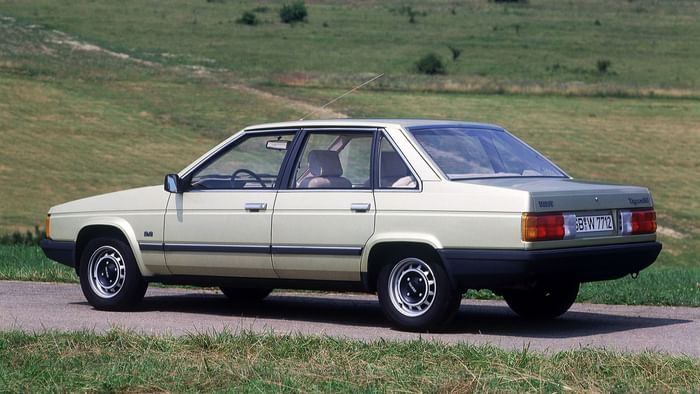
Keen to avoid making the same mistake with its next big car, yet still hungry for a large slice of the executive car pie, Chrysler Europe launched the C9 project. The plan was for the Simca 2000 (most likely Chrysler 2000 in the UK) to sit above Horizon (C2) and Alpine (C6) as its large, rear-wheel drive, four-door saloon, with the Ford Consul/Granada firmly in its sights. Burton Bouwkamp, Chrysler Europe’s executive director of product development, told his bosses in the US that the C9 would double its executive car sales from 30,000 to 60,000 a year, giving the company a 5 percent share of the market. To achieve this, the car would need a clear identity and be good enough to topple the Granada. Some half a million Mk1 ‘Grannies’ were made, followed by nearly a million Mk2s. Figures Chrysler Europe could only dream of…
Like the Alpine and Horizon, the technical side of the C9 would take place in France, with the styling completed in Britain under the direction of Roy Axe. The final design is credited to the American Art Blakeslee, who spent 20 years at Chrysler before moving to Citroën. There are suggestions that the team at Whitley favoured an extravagant design, more in the mould of the Citroën CX and forthcoming Rover SD1, but Detroit demanded something more prosaic. But if the Brits didn’t get their way with the aesthetics, the French scored a victory with the handling. To save money, the Americans believed the C9 could utilise the rear suspension from the 2 Litre/180, while the Europeans favoured an independent setup. To prove a point, two C9s were taken to a test track in Belgium: one with the American’s preferred suspension, the other with the European upgrade. One car stayed on the track, the other didn’t, scoring the Europeans a timely equaliser. The choice of engine was also high on the to-do list. With the flagship Granada boasting a V6, the Audi 100 a five-pot, and Rover having access to the ex-Buick V8 for its forthcoming European Car of the Year, Chrysler needed a suitable flagship. It fancied the PRV V6, as seen in the Peugeot 604, Renault 30 and Volvo 264/265, but PSA was understandably reluctant given the likely competition for the 604 and CX. It also considered turning to the Japanese by using a Mitsubishi straight-six, but the events of 1978 meant that it would use the PRV after all.
It should have been a match made in heaven: a 2664cc V6 engine for the flagship Tagora to sit above the Simca 2165cc four-pot and Peugeot 2304cc turbodiesel. But from both a political and engineering perspective, the V6 created a problem, with Peugeot inheriting a new model that could, with a strong wind and a large slice of optimism, steal sales from the 505, 604 and CX. Not that the Tagora had genuine hopes of competing with the 604, which was good enough to rival the best from Munich and Stuttgart. When testing the 604 SL against the Mercedes-Benz 280E and BMW 728, CAR tipped its beret in the direction of the Peugeot, praising its ‘comfort, space, silence, middle roadholding and fair performance and economy’. Its Pininfarina styling was elegant from all angles, which isn’t something you can say about the Tagora.
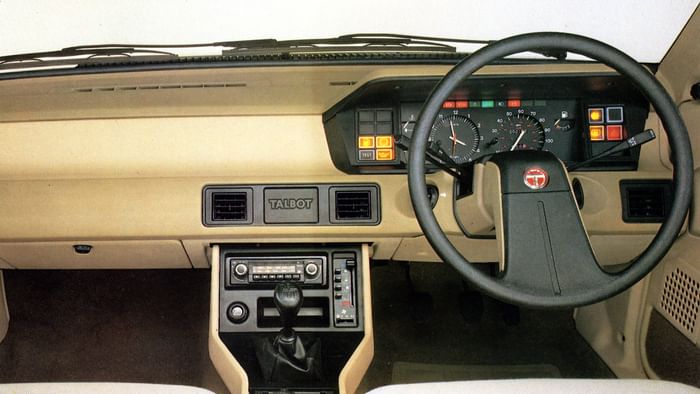
If the 604 was safe from the threat of death by Tagora, what about the 505? To avoid a clash, Peugeot essentially created a narrow slot between its two large saloons, which was like putting a three-square peg in a… well, a square hole. Burton Bouwkamp, who, with a name like that was surely destined for a career in Hollywood had he not enjoyed four decades at Chrysler, said: ‘Peugeot delayed the production date of the C9 to make changes to install their V6 engine and to increase the feature and appointment level – and the price. I think they moved the front wheels forward about two inches to accommodate the engine. I think the addition of the V6 and the wheel movement actually helped the C9. I think it failed in the marketplace because PSA did not need the car. They already had two cars (Peugeot 604 and Citroën CX) in this 1,200,000 to 1,500,000 market segment. It seemed to me that the C9 should have been a new model of the 604.’
There’s no denying that PSA didn’t need the C9, but the project was too advanced to scrap; Roy Axe approved the design in 1976! Bouwkamp said: ‘The C9 programme approval by Chrysler Corporation management was for more than $60 million for special tools. This did not include product development costs which were expensed rather than capitalised’. To save further costs, PSA raided its parts bin to finish the job, which included the use of the rear axle from the 505, which was narrower in track by 60mm. At best, this made the Tagora look over-bodied, but some would argue that it’s just plain awkward. If only the UK had got its way with its original styling proposal, which included Citroën-like partly enclosed rear arches. At least it would have given the sales and marketing team somewhere to hide from the production figures…
The Tagora went on sale in France in April 1981, by which time the large executive car market had shrunk and consumer confidence had crumbled in the wake of yet another oil crisis. ‘Wake’ being the operative word for something that felt like a dead car driving from the moment it arrived in the UK in May 1981. CAR said: ‘The new car was seen as a vital flagship for the rejuvenated Talbot range. Instead it has been an embarrassing sales disaster, save for limited success in West Germany. As the latest comer to an already overcrowded and shrinking market, its fate was sealed almost regardless of marketing effort or even of technical excellence.’ It did praise the space in the back, calling it ‘of limousine proportions’, although it did add that it could have been used to deliver more room in the front. The luggage capacity was labelled ‘colossal’, while the Granada could only manage ‘ample’ and the Volvo ‘generous’.
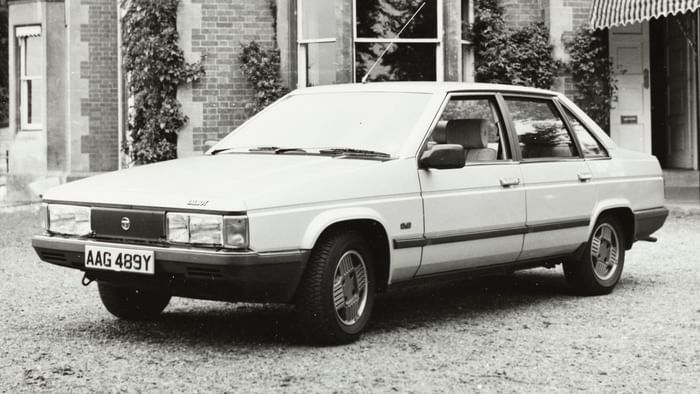
If we had to use one word to describe the overall sentiment of the road tests, it would be ‘pleasant’. Or ‘nice enough’ if we extended the word count to two. Take Bill Boddy’s review in Motor Sport, which includes: ‘It is the sort of unassuming car you don’t feel you have to necessarily drive brilliantly or fast all the time, which makes for untiring touring.’ Don’t get us wrong, we’d willingly buy a large car for the promise of ‘untiring touring’, but the senior execs of the 1980s wanted more than that. That said, we’re sure the Coventry City chairman Jimmy Hill enjoyed some ‘untiring touring’ in the Tagora he received as part of Talbot’s sponsorship of the football team. Some say Hill would have preferred a Peugeot 604, but he took it on the chin… Here all day, available for weddings and birthdays, etc.
In the UK, both the GL and GLS were powered by the 2155cc engine, but while the GL had a four-speed gearbox, the GLS gained an extra cog. GL customers had to make do with a quartz clock, rather than the GLS’s digital timepiece, and missed out on a rev counter, rheostat panel light, tinted glass, body side mouldings, central locking, electric front windows, cassette player, velour seat facings, front door bins, rear courtesy light, map reading light and vinyl side trim in the boot. But the most notable omission was the Trip Readiness Tester (that’s Talbot’s capitalisation), which, as per the brochure, enabled ‘certain aspects of the vehicle to be checked even before setting off’. The seven checks were the front sidelights, rear lights, radiator water level, washer fluid level, low fuel level, brake pad wear and engine oil level. If your dad couldn’t drive you to school in the Knight Industries Two Thousand, an Anglo-French saloon with a Trip Readiness Tester was the second-to-last best thing.
Actually, scrub that, because what your dad really wanted was the Tagora SX, which arrived here in the second half of 1981. And we’re not being sexist, because Talbot described the GLS as ‘unquestionably a car for the man who recognises and demands that added measure of style and versatility’. Which is only partly true, because a real man would wait for the SX, described by LJK Setright as ‘in many ways a better car than the Peugeot 604’. His review leaves you in no doubt that he enjoyed the press trip in Morocco. He said: ‘I took enormous pleasure in leaving the entire press-trip convoy behind after a late start.’ While the PRV V6, tweaks to the suspension and more lavish interior undoubtedly added to its appeal, the fitment of Michelin TRX-AS tyres was another factor in the Tagora’s rise to the verge of acceptability. Even without the knowledge that they improved both the ride comfort and handling, the combination of the tyres and four-spoke alloy wheels worked wonders for the aesthetics. It was as close as the Tagora got to bedroom wall poster material.
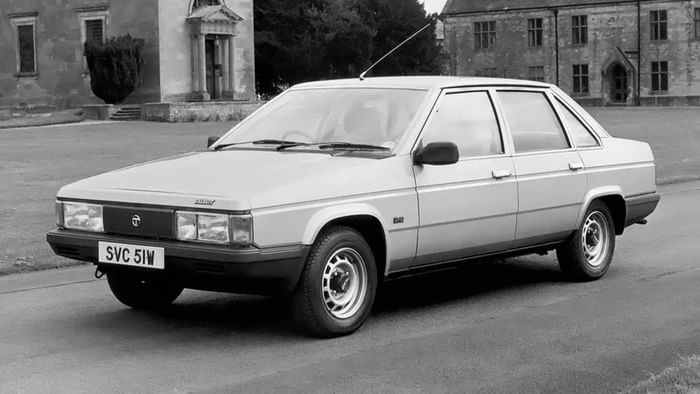
Maybe some kids got as far as relegating the Countach or ‘Tennis Girl’ poster to the bin, especially as the triple-carb SX was the fastest French production saloon at the time. Who needs a Gandini masterpiece or a cheeky tennis player when a three-box saloon has a top speed of 195km/h (121mph) and a zero to sixty time of nine seconds – three seconds quicker than the 2.2, and around eight seconds faster than the turbodiesel? Not to mention full velour seats, rear electric windows, headlight wash/wipe, stereo upgrade, four speakers, rear head restraints, carpeting in the boot and, that must-have accessory for the French exec, a cigar lighter for rear-seat passengers. Everything in this paragraph simply highlights what we’ve suspected for the past four decades: the Tagora is more appealing than a Countach. Or a tennis player’s bottom.
But none of this explains why the Talbot Tagora is held in such high regard. There’s always something for a car enthusiast to hang their hat on; a USP to justify the desire. Strong performance. Sharp handling. Supreme comfort. Achingly good styling. Motor sport success. Even the fact that we associate it family holidays or growing up. Heck, we even find room in our hearts for cars that can only be described as rubbish. The Tagora doesn’t fall into this category. It was never rubbish. A car without a purpose, yes. Maybe even a car without an audience: sales limped to just shy of 19,500 before production stopped in 1983. Perhaps it’s the Tagora’s unicorn status; the overwhelming sense of unobtanium. You’ll never ride on the Aérotrain, live in a fancy apartment off the Boulevard St. Michel, or keep a racehorse just for a laugh – ha-ha-ha. And we wouldn’t recommend wearing a topless swimsuit on the beach at Juan-les-Pins. The Tagora is similarly off-limits: a car to admire from afar and live in hope that you’ll unearth one under a pile of sheets in a dusty barn. Its troubled birth and status as Talbot’s last big car combine to elevate the Tagora to unlikely greatness.
The last words should go to LJK Setright, who, after his Moroccan adventure, concluded: ‘My initial response to the Tagora, regardless of which model, was to wonder who could want it, since there were so many of its kind in circulation already. This hardly seemed the time for yet another mildly swanky saloon, which is all the Tagora promised from a distance. After driving it I can see that it has its place, even though there may be very little in the way of individual details to pick out for praise or even more mere analysis: if one accepts the kind of cars that it represents, it is a car that is very difficult to fault – and there must be plenty of call for cars like that.’ We’ll raise a Napoleon brandy to that.
This article first appeared in issue 29 of Classic.Retro.Modern. magazine.
